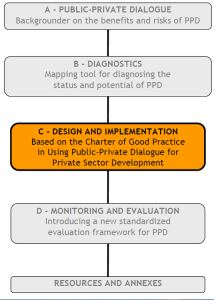The diagnostic mapping tool assesses the status and potential of public-private dialogue. Now it comes to designing and implementing dialogue, what issues should a task manager consider?
This section of the handbook is based around the Charter of Good Practice in using Public-Private Dialogue for Private Sector Development (see section A. 4. above)

